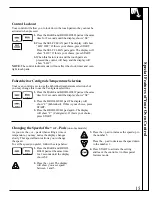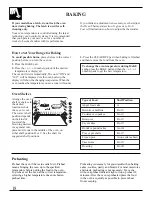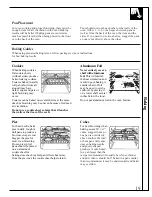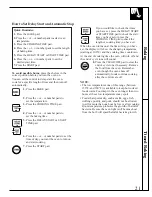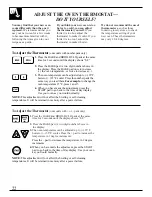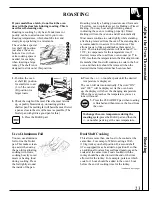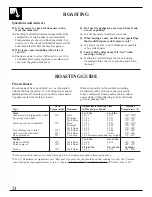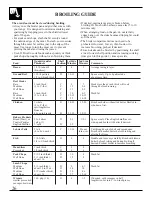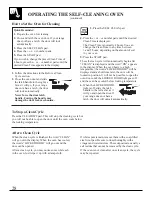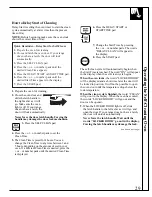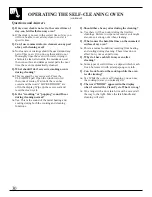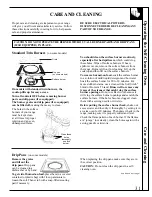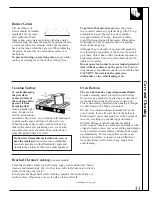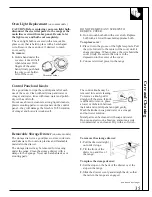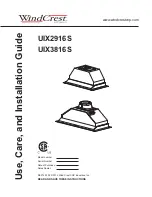
BAKING
(continued)
Don’t Peek
Set the timer for the estimated cooking time and do
not open the door to look at your food. Most recipes
provide minimum and maximum baking times such
as “bake 30-40 minutes.”
DO NOT open the door to check until the minimum
time. Opening the oven door frequently during
cooking allows heat to escape and makes baking
times longer. Your baking results may also be affected.
TIMED BAKING
How to Time Bake
If your model has a latch, do not lock the oven
door during Timed Baking. The latch is used for
self-cleaning only.
The oven control allows you to turn the oven on or
off automatically at specific times that you set.
NOTE: Before beginning make sure the clock shows
the correct time of day.
To set the clock, first press the CLOCK pad. Press the
+ or – or number pads until the correct time of day is
displayed. Press the CLOCK pad to start.
How to Set Immediate Start and Automatic Stop
To avoid possible burns, place the shelves in the
correct position before you turn the oven on.
The oven will turn on immediately and cook for a
selected length of time. At the end of Cooking Time,
the oven will turn off automatically.
1. Press the BAKE pad.
2. Press the + or – or number pads to
set the oven temperature.
3. Press the COOKING TIME pad.
4. Press the + or – or number pads to
set the baking time.
The oven temperature and the cooking
time that you entered will be displayed.
5. Press the START pad. The display shows
the oven temperature that you set and the
cooking time countdown. (The display
starts changing once the temperature
reaches 100°F.)
The oven will continue to cook for the
programmed amount of time, then shut
off automatically.
6. Press the CLEAR/OFF pad to clear the
display if necessary. Remove the food from
the oven. Remember, even though the oven
shuts off automatically, foods continue
cooking after the controls are off.
NOTE: Foods that spoil easily, such as milk, eggs, fish,
stuffings, poultry and pork, should not be allowed to sit
for more than one hour before or after cooking. Room
temperature promotes the growth of harmful bacteria.
Be sure that the oven light is off because heat from the
bulb will speed harmful bacteria growth.
Baking Pans
Use the proper baking pan. The type of finish on the
pan determines the amount of browning that will occur.
• Dark, rough or dull pans absorb heat resulting in a
browner, crisper crust. Use this type for pies.
• Shiny, bright and smooth pans reflect heat,
resulting in a lighter, more delicate browning.
Cakes and cookies require this type of pan.
• Glass baking dishes also absorb heat. When
baking in glass baking dishes, the temperature
may need to be reduced by 25°F.
• If you are using dark non-stick pans, you may find
that you need to reduce the oven temperature 25°F.
to prevent over-browning.
20










